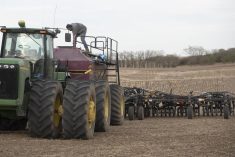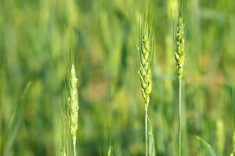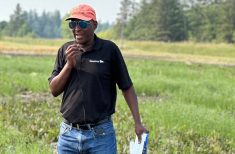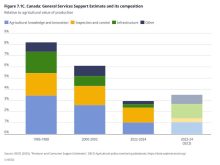Precision crop maps can help canola producers apply 4R nutrient management if their fields have a lot of up and down, a researcher with the University of Manitoba says.
WHY IT MATTERS: 4R nutrient management, which stands for applying the right fertilizer source at the right rate, right time and in the right place, has become a rallying call for fertilizer efficiency in Canada and is being pushed by both industry and government.
There’s been growing interest in precision 4R fertilization over the past few years, said Mario Tenuta during the Canola AgriScience Cluster Research Roundup webinar in June.
Read Also
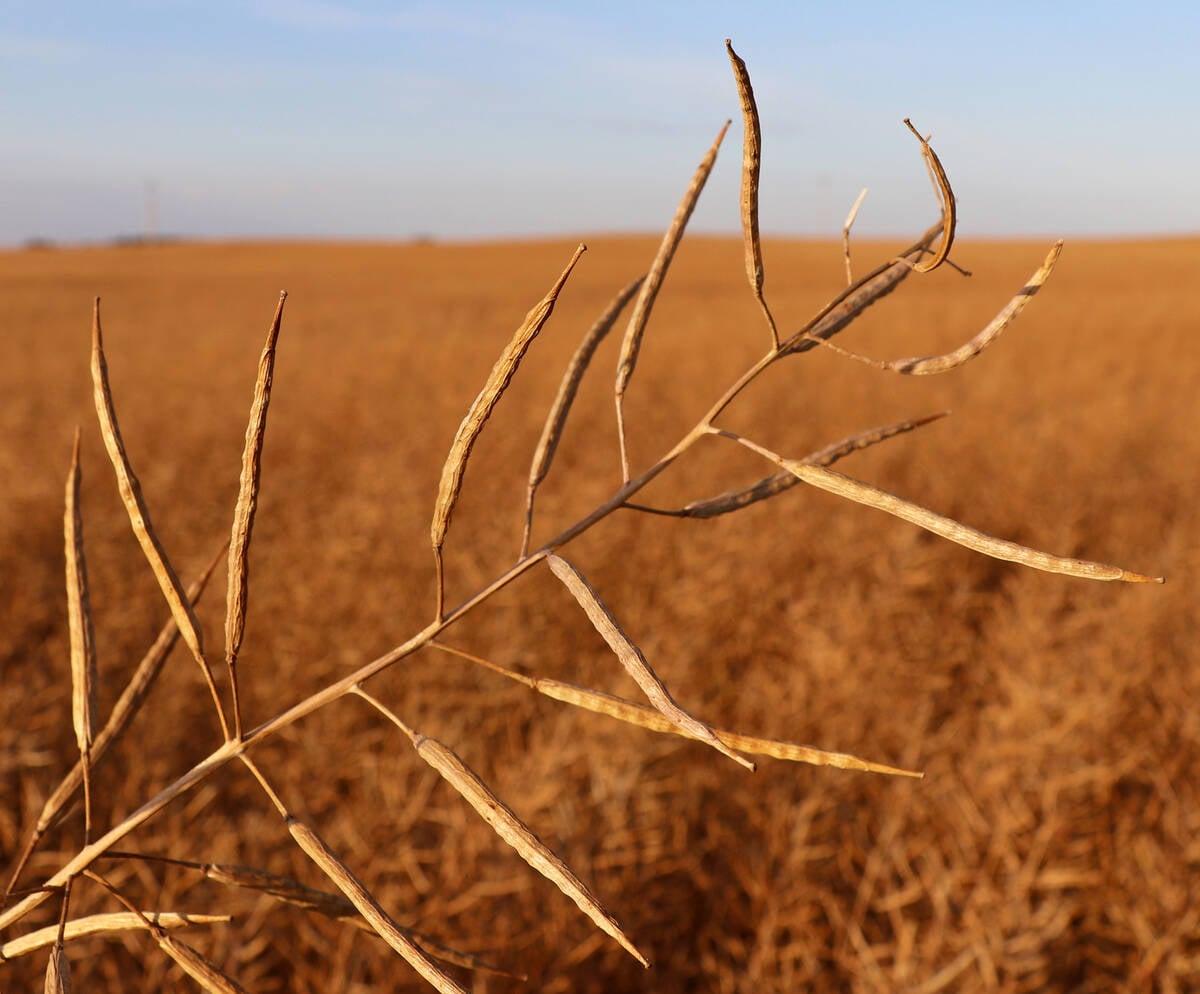
Canola suffers chaotic 2025
Canola had something of a tumultuous 2025, pushed one way or another by a variety of factors. Nearby canola futures traded in a wide range from about C$550 to C$750 per tonne over the last year, but were within a few dollars of where they started by December with the most-active March contract in the middle of that range at nearly C$633 as of Dec. 11.
The 4R movement has been key framework for Fertilizer Canada, gotten official support from Manitoba Agriculture and has been touted and incentivized by various provincial and federal commodity groups, funding programs and organizations like Farm Credit Canada.
But Western Canada and even individual farms have a lot of variation in their soils and topography, Tenuta noted, and that’s a challenge for farmers looking to adopt 4R.
Tenuta has been at the leading edge of multi-stakeholder research into 4R nutrient management.
Possibly the biggest takeaway from one study has been consistently higher nitrous oxide (N2O) greenhouse gas emissions coming from the lower areas of fields.
“(Fields) have underlying landscapes and that affects the return on investment of nitrogen fertilizers and changes nitrogen losses (and) response to fertilizer application, depending where you are on the landscape,” said Tenuta.
The hypothesis of the study, he said, is that by saving nitrogen and not losing it, farmers don’t have to apply as much nitrogen fertilizer. That can save producers cash while minimizing greenhouse gas emissions.
”Nitrous oxide is emitted more so in depression areas because it’s wetter. And so we know that certain areas of the landscape have greater potential for N2O release than others,” he said.
“So when we’re managing a strategy to reduce emissions — and where some 4R practices cost money and potentially even actually spoil some profits — it’s important to know (if we can) tailor the 4R practices to those regions or areas of the field which give us the most return in terms of greenhouse gas reductions and also less impact on profitability.”
Technology looks below the surface
The study — which has two more years to go — is a collaboration among the University of Manitoba, University of Saskatchewan, the Indian Head Agricultural Research Foundation and the three provincial Prairie canola grower associations under the umbrella of the Canola Council of Canada.
Tenuta’s co-investigators included Philip Harder, Rich Farrell, Tristan Skolrud, and Chris Holzapfel.
“The research is done on commercial farm fields and … the agronomics, treatment application and so forth is actually done by farmers,” said Tenuta.
Three research sites were chosen — two in Saskatchewan (Saskatoon and Indian Head) and one in Manitoba (Brandon).
Each field was divided into 10 management zones based on soil properties such as soil nutrient levels, water regime, water movement, drainage and topography. This was verified and fine tuned by ground-truthing.
Then came the development of SWAT (soil, water and topography) maps by Saskatoon-based ag tech firm Croptimistic Technology. These provided variable rate fertilizer prescriptions based on the management zones and their expected yield.
“(We) take some samples — lots of samples actually — for nutrient analysis, find out what’s present in the soil before planting and do a yield analysis in terms of seeing what has been the previous responses to nitrogen fertilizer in these different management zones. And they use all that to fine-tune a prescription map,” Tenuta said.
Then came different fertilizer treatments and the measurement of resulting emissions.
Zone treatments included a flat rate of urea based on a general soil test; variable rate nitrogen based on the SWAT prescription map; a variable rate urea and SuperU mix, plus that same treatment minus 10 per cent of the nitrogen.
The variable rate urea and SuperU mix was considered the precision 4R treatment.
The first tested location was the commercial field near Brandon in 2023. N2O emissions were found to be highest in the depression zones. However, it was a dry summer, which likely weighed on emission levels, said Tenuta.
The trial at Indian Head in 2024 saw a large drop in emissions under variable rate urea in the depression zones. The mid-slope zones saw a benefit from the precision rate and precision rate with reduced nitrogen.
Canola yields in the knoll tops increased with a SWAT map prescription of nitrogen and with precision 4R treatment. Yield in the lower zones was generally consistent and at par with some of the midlands under that same treatment.
The Saskatoon test saw N2O reductions in the mid-slope zones under variable rate urea.
“When we see this reduction with the precision practices, that’s quite a reduction, actually, in terms of N2O emissions,” said Tenuta.

Precision 4R practice push
Warren Ward, an agronomist with the Canola Council of Canada, asked Tenuta about the capacity of producers to invest in precision 4R equipment.
“One of the challenges I always hear about for uptake on new practices is logistics and equipment in addition to cost. So I’m just wondering, in your opinion, what’s the feasibility this precision 4R approach at this point in time?” Ward asked.
Tenuta said the cost hurdle is becoming smaller as time goes on, especially as precision tech continues to be packaged with farm equipment.
However, there’s a bit of a class divide. He said producers with “big acres” and economies of scale are not only the ones most likely to afford this decked-out equipment, but benefit from it the most. Interest is also a factor, particularly among younger producers.
“It’s fun for them,” Tenuta said. “It’s going to be those folks that are going to be the ones that this technology appeals to, and they’ll have the equipment.
“The ones that don’t have the equipment that are dealing with seeders and drills and things like that from the 1990s … they’re going to retire that way and they’re not going to be doing this.”
The project funders include Alberta Canola, SaskCanola, Manitoba Canola Growers, and the Sustainable Canadian Agricultural Partnership through the Canola Council of Canada Science Cluster.




